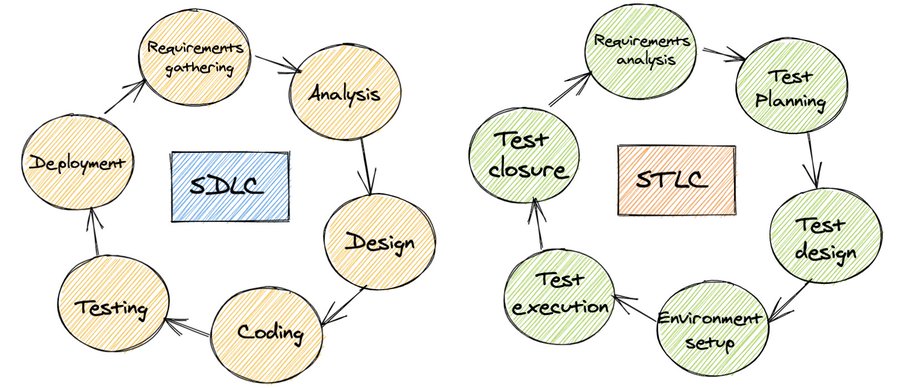The Software Testing Life Cycle (STLC) is a structured sequence of activities conducted throughout the testing process to ensure the achievement of software quality goals. STLC encompasses both verification and validation activities. It’s important to dispel the misconception that Software Testing is a singular, isolated activity. In reality, it comprises a series of methodical steps aimed at certifying the quality of a software product. The acronym STLC stands for Software Testing Life Cycle, representing the systematic approach undertaken to enhance the overall quality of the software being developed.

Entry Criteria:
Entry Criteria in the Software Testing Life Cycle (STLC) stipulates the essential prerequisites that must be fulfilled before testing activities can commence at any given stage. These criteria serve as the baseline requirements to ensure a smooth transition into the testing phase.
Exit Criteria:
Exit Criteria, on the other hand, outlines the conditions and deliverables that must be accomplished before concluding the testing activities for a particular stage in the STLC. It defines the necessary benchmarks and completion points that signify the readiness to move on to the next phase or to finalize the testing process.
In an ideal scenario, progression to the next stage in the STLC would only occur if the exit criteria for the preceding stage have been met. However, practical constraints may sometimes necessitate deviations from this ideal sequence. This tutorial will focus on elucidating the various activities and deliverables associated with each stage in the STLC, providing a detailed exploration of the testing life cycle.
In every Software Testing Life Cycle Model (STLC Model), there are six primary phases that contribute to the systematic and effective testing of software:
- Requirement Analysis:
During this phase, the testing team comprehensively analyzes and understands the software requirements. This involves gaining a clear understanding of the functionalities, features, and performance expectations of the software to establish a solid foundation for the testing process. - Test Planning:
In the Test Planning phase, the testing team formulates a detailed plan outlining the approach, scope, resources, schedule, and activities for the testing process. This plan serves as a roadmap for the entire testing life cycle. - Test Case Development:
Test Case Development involves creating detailed test cases based on the software requirements. These test cases act as a set of instructions for the testing team to systematically verify the software’s functionality, performance, and other aspects. - Test Environment Setup:
The Test Environment Setup phase involves preparing the necessary infrastructure, tools, and resources required for testing. This includes configuring the testing environment to mimic the actual production environment as closely as possible. - Test Execution:
Test Execution is the phase where the actual testing takes place. The test cases developed earlier are executed, and the software is systematically evaluated against expected outcomes. Defects or issues are identified, reported, and tracked for resolution. - Test Cycle Closure:
The Test Cycle Closure phase marks the conclusion of a testing cycle. It involves summarizing the testing activities, generating reports, and assessing the overall effectiveness of the testing process. Lessons learned during the testing cycle are documented for future improvements.
These six phases collectively form a cohesive framework that guides the testing team through the entire Software Testing Life Cycle (STLC) , ensuring thorough and reliable testing of the software product.
